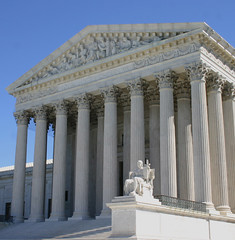76-92
| 12459397150 | Basis for representation in the House of Representatives | Population |  | 0 |
| 12459397151 | Reapportionment | A new apportionment (especially a new apportionment of congressional seats in the United States on the basis of census results) |  | 1 |
| 12459397152 | Why is gerrymandering so controversial? | Gerrymandering or drawing district lines to achieve favorable political results for one political party |  | 2 |
| 12459397153 | Precedents from the two Supreme Court case decisions that have ruled on gerrymandering | Baker v. Carr and Wesberry v. Sanders |  | 3 |
| 12459397154 | Hierarchy of leadership in the House of Representatives | Speaker of the House- House Majority Leader- House Majority Whip- same positions in minority except for the position of speaker |  | 4 |
| 12459397155 | Committees | Breaks down the information and bills into manageable chunks and allows for committees with some expertise in the areas to consider the bills on their merits. |  | 5 |
| 12459397156 | Standing Committee | a permanent committee |  | 6 |
| 12459397157 | Joint Committee | a committee made up of people from both chambers |  | 7 |
| 12459397158 | Conference Committee | A temporary, ad hoc panel composed of House and Senate conferees which is formed for the purpose of reconciling differences in legislation that has passed both chambers |  | 8 |
| 12459397159 | Select Committee | committee appointed for some special purpose |  | 9 |
| 12459397160 | Iron triangle | the legislature, interest groups, and bureaucracy. The triangle is used to show how the three entities work in creating public policy. |  | 10 |
| 12459397161 | Pros of Iron Triangles | If everyone in the triangle cooperates, as they usually do, everyone benefits |  | 11 |
| 12459397162 | Cons of Iron Triangles | It sets up conditions which can be exploited by corrupt politicians to peddle favors or blackmail business. Instead of serving the "public good" the politicians serve their own political interest. |  | 12 |
| 12459397163 | Differences that distinguish the Senate from the House | The Senate is much smaller, and politicians serve longer terms, so they are more controversial in their rulings, and free debate is common |  | 13 |
| 12459397164 | Hierarchy of leadership in the Senate | The most real power in the Senate is in the hands of the majority and minority leaders |  | 14 |
| 12459397165 | Distinguishing powers of the Senate | 1) To confirm Presidential appointments such as Supreme Court justices. 2) To ratify treaties made by the executive branch. 3) The Senate acts as judge and jury in impeachment cases. |  | 15 |
| 12459397166 | Filibuster | Filibusters do not occur in the House because House rules provide for limited amounts of time for each Representative to speak. In the Senate, there are no rules regarding how long a Senator may speak, so a filibuster may be used, unless three-fifths of Senators agree to invoke cloture, that is, end debate on an issue. |  | 16 |
| 12459397167 | Bill | proposed law |  | 17 |
| 12459397168 | Public bill | a congressional or parliamentary bill involving the general interests of the people at large or of the whole community. |  | 18 |
| 12459397169 | Private bill | a congressional or parliamentary bill involving the private interests of a particular individual, corporation, or local unit |  | 19 |
| 12459397170 | Resolutions | a formal expression of opinion or intention made, usually after voting, by a formal organization, a legislature, a club, or other group |  | 20 |
| 12459397171 | Joint resolutions | A resolution passed by both houses of a bicameral legislature and eligible to become a law if signed by the chief executive or passed over the chief executive's veto. |  | 21 |
| 12459397172 | Concurrent resolutions | a resolution passed by both houses of a legislative body that lacks the force of law |  | 22 |
| 12459397173 | Cloture | the closing or limitation of debate in a legislative body especially by calling for a vote |  | 23 |
| 12459397174 | Four options the president can take after Congress has passed a bill | 1. Sign it into law 2. Veto the bill 3. Hold on to the bill without signing or vetoing 4. Send the bill back to the last House that past it with recommendations for changes |  | 24 |
| 12459397175 | How can the Supreme Court affect a law? | A US Supreme Court majority or plurality decision establishes or upholds a precedent for applying and interpreting federal or constitutional law, to be used by the lower courts in deciding relevant future cases. The Court may also overrule legislation found to be unconstitutional. |  | 25 |

